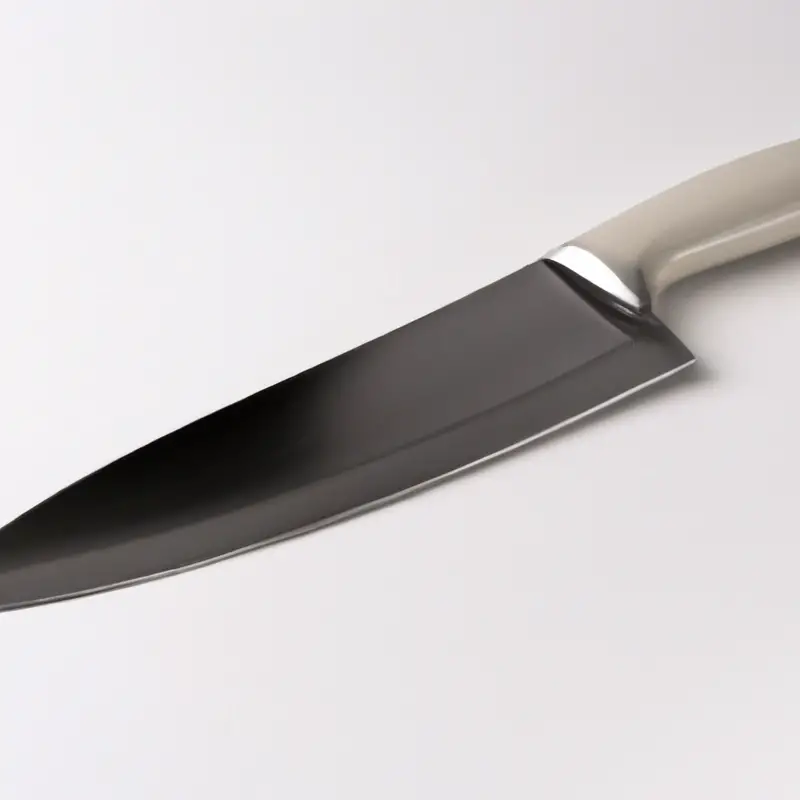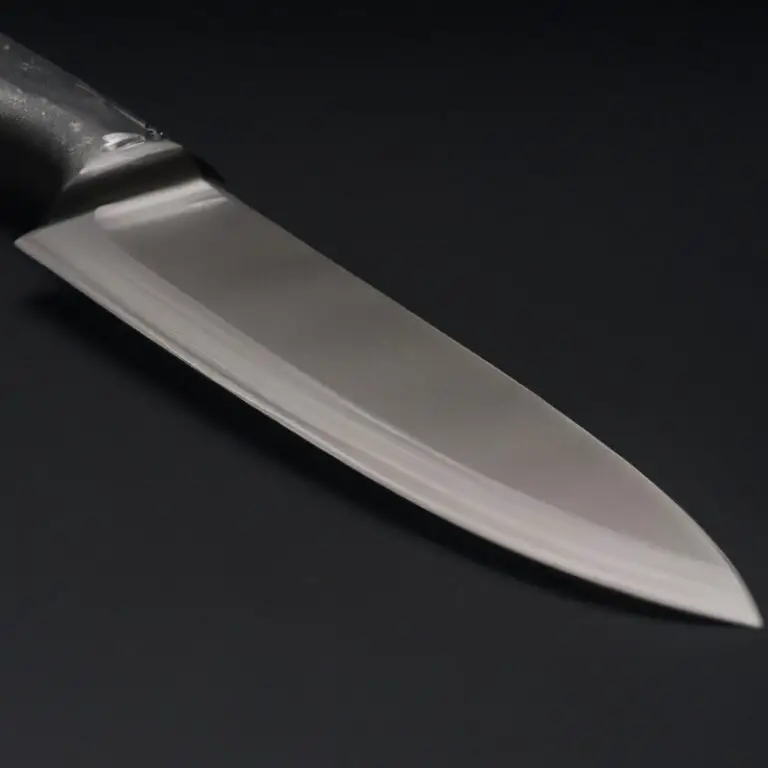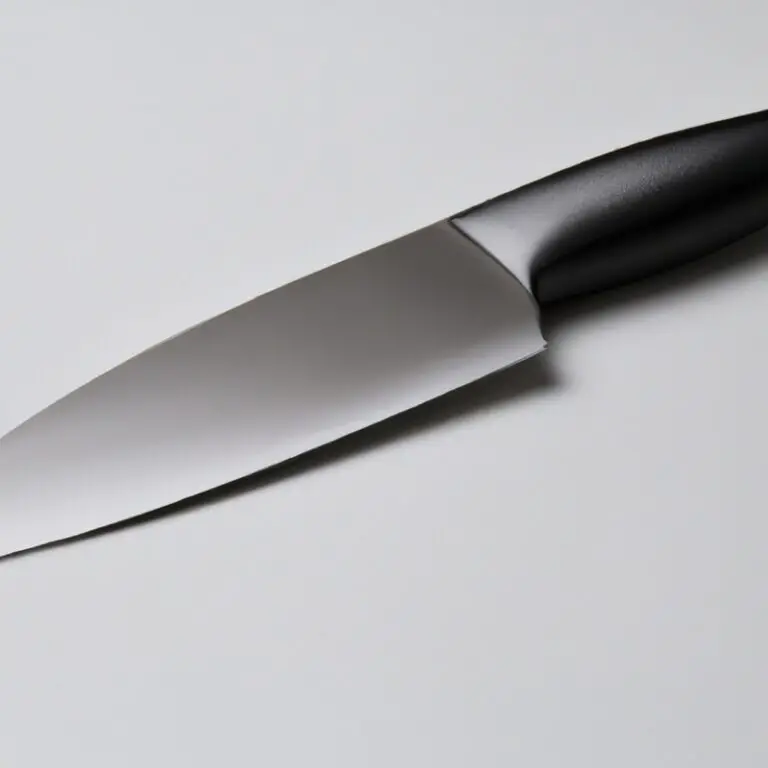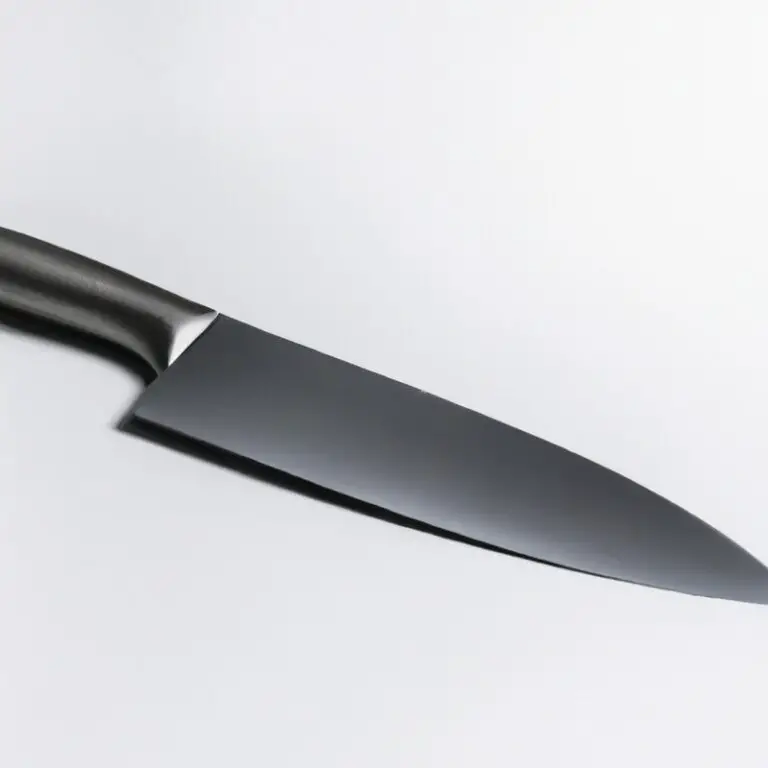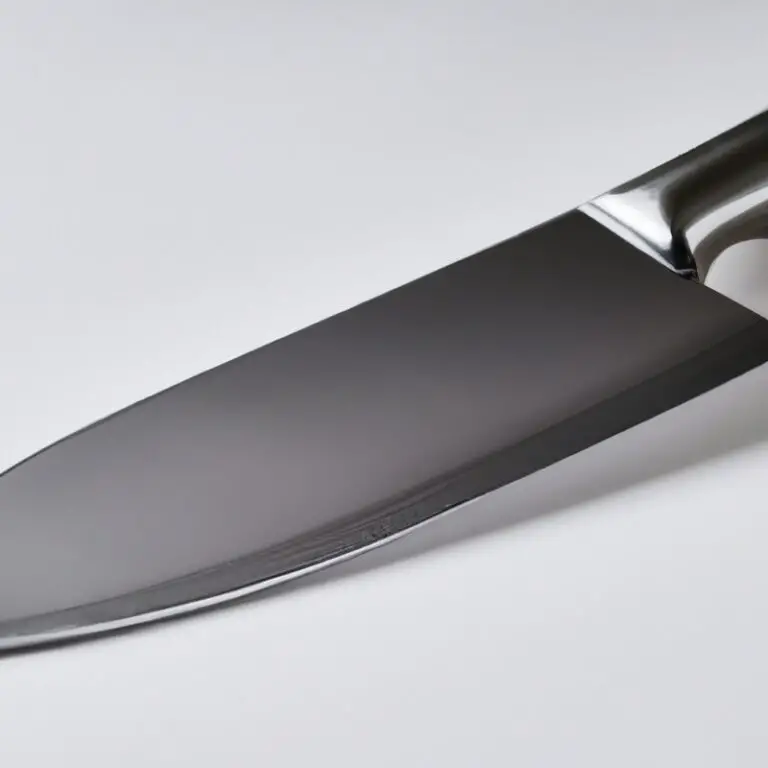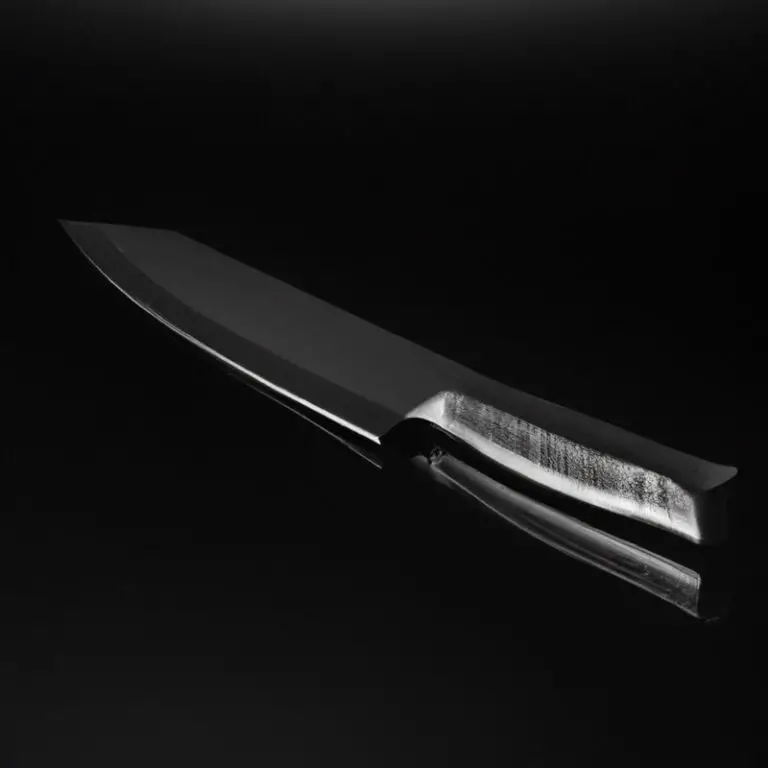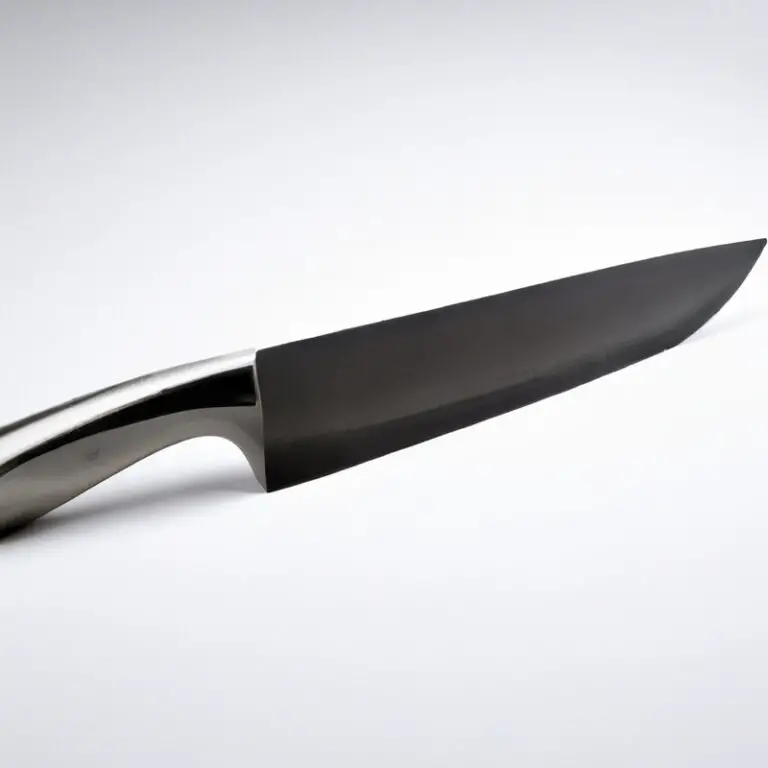Steps To Sharpen a Santoku Knife With a Sharpening Stone: Effortlessly Sharp!
Key Takeaways:
- To sharpen a Santoku knife with a sharpening stone, you need to follow the right techniques in order to avoid damaging the blade.
- Using a sharpening stone with varying grit levels allows you to get a sharp edge and maintain the blade’s integrity.
- Properly sharpened Santoku knives will improve your cooking experience and lead to better results, making it a worthwhile investment in your kitchen.
- Regular maintenance and sharpening of your Santoku knife will increase its lifespan and help you save money in the long run.
Are you tired of struggling with a dull Santoku knife when trying to prepare your favorite dishes? If so, it’s time to sharpen that blade! Proper knife sharpening not only makes your cutting tasks easier and faster, but it also helps extend the life of your knife.
However, sharpening a knife can be intimidating if you’ve never done it before.
That’s why we’ve put together this step-by-step guide on how to sharpen your Santoku knife using a sharpening stone. From choosing the right stone to avoiding common mistakes, we’ve got you covered.
Get ready to take your cooking game to the next level!
| Steps | Description |
|---|---|
| Step 1 | Wet the sharpening stone with water for at least 5 minutes before use |
| Step 2 | Hold the Santoku knife in your dominant hand and place the blade against the sharpening stone at a 15-20 degree angle |
| Step 3 | Apply light pressure and move the blade back and forth along the stone, following the angle of the blade |
| Step 4 | Repeat on the other side of the blade for an equal amount of time, maintaining the same angle |
| Step 5 | Check the sharpness of the blade by lightly running your thumb over the edge; if there are any burrs or nicks, repeat steps 3 and 4 |
| Step 6 | Rinse the blade with water and wipe dry with a cloth |
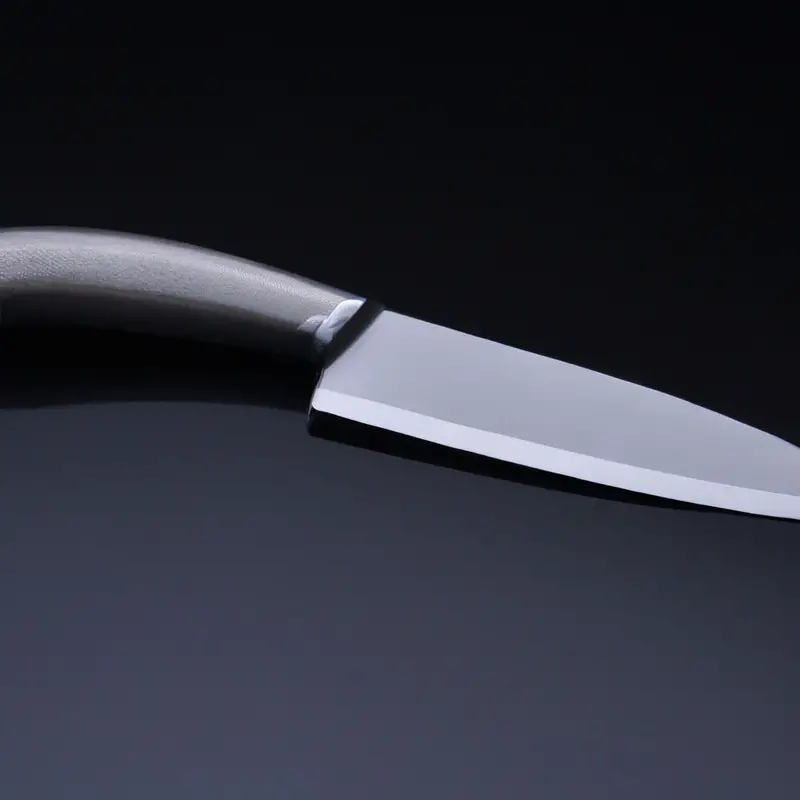
Benefits of Proper Knife Sharpening
The benefits of proper knife sharpening cannot be overstated. A sharp knife not only makes cooking easier and more efficient, but it is also much safer to use.
Dull knives are more likely to slip and cause accidents, whereas a sharp knife will cut through food with ease and precision.
By sharpening your knife regularly, you can prolong its lifespan, as the blade will be less likely to chip or break due to excessive force needed to cut with a dull edge. Additionally, a sharp knife will require less force to cut through food, reducing the risk of hand and wrist strain.
Properly sharpened knives also provide a better texture and appearance to food, resulting in less bruising and crushing during cutting.
This gives food a more fresh and appetizing appearance, especially when it comes to vegetables and fruits. Overall, the benefits of proper knife sharpening include improved safety, ease and efficiency of cutting, longer knife lifespan, reduced hand and wrist strain, and better food presentation.
By following the steps to sharpen your Santoku knife with a sharpening stone, you can enjoy all these benefits and more.
Safety First: Precautions to Take Before Sharpening
Safety is crucial when it comes to sharpening your Santoku knife. Before starting the sharpening process, you should take some necessary precautions to prevent any accidents.
Here are some precautions you should follow:
- Wear protective gear: Always use protective gloves and eyewear to protect yourself from any injury during the sharpening process.
- Secure your knife: Make sure your knife is held securely on a stable surface and won’t move during sharpening.
- Keep your workspace clean: Ensure your workspace is clean to avoid any debris or objects falling on the knife. It will also help to prevent the knife from slipping off the sharpening stone.
- Be mindful of the direction: Always maintain a consistent angle and be mindful of the direction when sharpening your knife.
By taking these simple precautions, you can avoid unnecessary accidents while sharpening your Santoku knife.
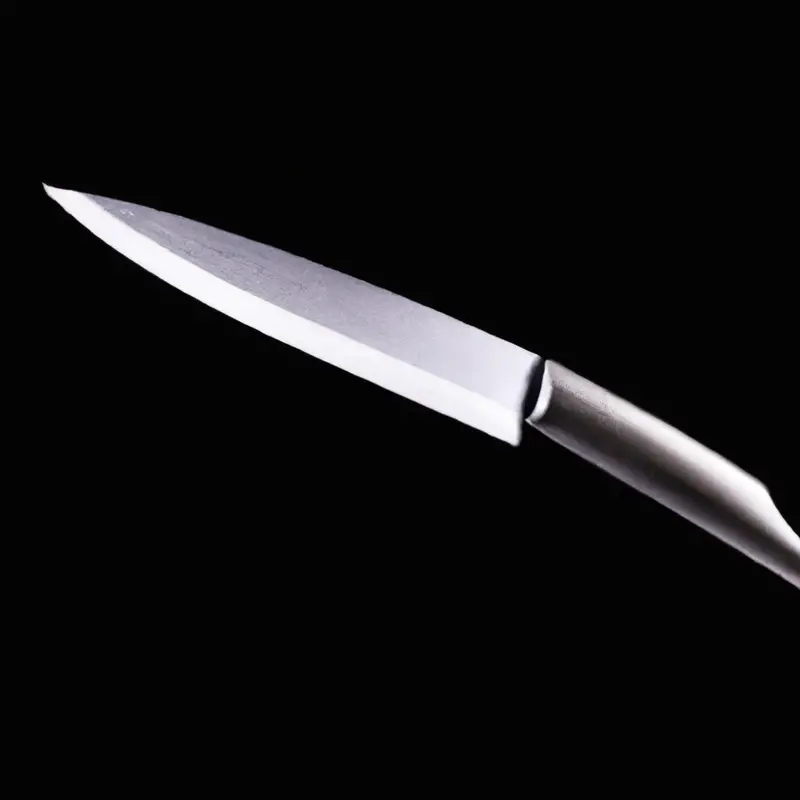
Choosing the Right Sharpening Stone for Your Santoku Knife
Choosing the right sharpening stone for your Santoku knife is crucial to achieving a sharp blade. There are various types of sharpening stones to choose from, including ceramic, diamond, and water stones.
Ceramic stones offer a fast sharpening experience but may wear down quickly.
Diamond stones, on the other hand, are durable and long-lasting, but they might be too aggressive for certain knives. Water stones are a popular option for Japanese knives like the Santoku knife, as they provide a smooth sharpening experience and are gentle on the blade’s edge.
When choosing a sharpening stone, consider the grit level, which ranges from coarse to fine.
The coarser the grit, the more material the stone will remove, making it useful for repairing chips or reshaping the blade. The finer the grit, the smoother the edge will be, making it great for final polishing and refinement of the blade’s sharpness.
Ultimately, it’s best to choose a sharpening stone that matches your skill level and the degree of sharpness you desire.
Remember to use a lubricant like water or honing oil when using your sharpening stone to reduce friction and prevent damage to your blade.
Understanding the Angles & Technique for Sharpening
To properly sharpen a Santoku knife with a sharpening stone, it’s crucial to understand the angles and the technique for sharpening. The right angle depends on the type of knife and its intended use.
For a Santoku knife, a 15 to 20-degree angle is suitable.
It’s important to maintain this angle consistently throughout the sharpening process, using slow and gentle strokes while applying even pressure. When sharpening, start with the coarse side of the stone, then move to the finer side for a polished finish.
Keep the stone lubricated with water or oil to prevent damage to the blade and ensure a smooth sharpening surface.
It’s important to note that over-sharpening can damage the blade, causing it to lose its intended shape and durability. Regular maintenance, including honing and occasional sharpening, can keep your Santoku knife in top working condition.
In summary, understanding the proper angles and sharpening techniques can result in a sharper and more effective knife, while avoiding common mistakes like over-sharpening can help prolong its life.
Step-by-Step Guide: Preparing the Sharpening Stone
Step-by-Step Guide: Preparing the Sharpening Stone
- Choose the right type of sharpening stone. Consider the material (natural or synthetic and grit level (coarse, medium, or fine) suitable for your Santoku knife.
- Soak the sharpening stone in water for at least 10-15 minutes before use. This helps to prevent clogging and increases lubrication for smoother sharpening.
- Place the stone on a stable and flat surface. You may use a towel or rubber mat underneath to prevent slipping.
- Take out the flattening stone (if you have one and level the sharpening stone’s surface by gently scrubbing until it feels smooth.
- Start by using the coarse side of the sharpening stone for severely dull knives. Hold the knife at an angle of 10-15 degrees and begin to scrape it back and forth against the stone’s surface, ensuring the blade’s entire length touches the stone. Repeat this process for both sides of the blade.
- Once you have achieved the desired sharpness, flip the stone to the finer side and repeat the process at a slightly higher angle to refine the edge.
- Rinse the sharpening stone with water and let it air dry before storing it in a safe place.
Proper preparation of the sharpening stone is crucial for achieving optimal results when sharpening your Santoku knife. Follow these simple steps to ensure that your sharpening stone is at its best before you start sharpening.
Step-by-Step Guide: Proper Way to Sharpen Your Santoku Knife
Step-by-Step Guide: Proper Way to Sharpen Your Santoku Knife
- Start by placing your sharpening stone on a level surface, preferably with a non-slip mat to prevent any accidents.
- Pour some water onto the surface of the sharpening stone and spread it evenly across the top.
- Hold the knife at a 15 to 20-degree angle with the sharp edge facing away from you.
- Place the blade edge on the stone near the handle and slide it across the stone towards the tip, maintaining the same angle throughout the process.
- Repeat this motion four to five times on one side of the blade, before repeating the process on the other side.
- To test for sharpness, place a piece of paper under the blade and gently slice downwards. If the knife easily slices through the paper, it is sharp enough.
- Once fully sharpened, clean the knife with a damp cloth and dry it thoroughly.
By following these simple steps, you are now able to sharpen your Santoku knife with your sharpening stone effectively.
Care & Maintenance of Your Newly Sharpened Santoku Knife
Once you’ve finished sharpening your Santoku knife, it’s crucial to take care of it properly to maintain the sharpness. Here are some of the essential care and maintenance tips for your newly sharpened Santoku knife:
- Clean your Santoku knife with soap and water immediately after use and dry it thoroughly.
- Store your Santoku knife in a wooden block or protective sheath to prevent it from getting damaged.
- Avoid cutting hard surfaces such as bones, frozen foods, or anything that can dull the blade.
- Regularly hone your Santoku knife with a honing steel to keep the blade straight and sharp.
- Never put your Santoku knife in the dishwasher as it can damage the blade and handle.
By following these simple care and maintenance tips, you can extend the life of your newly sharpened Santoku knife and ensure it performs at its best for years to come.
Common Mistakes to Avoid When Sharpening Your Knife
Common Mistakes to Avoid When Sharpening Your Knife:
- Using the wrong sharpening angle: Different knives require different sharpening angles. Using the wrong angle can cause unnecessary wear and tear on your knife, and may make it dull faster.
- Not using enough lubricant: Using a lubricant when sharpening your knife helps prevent damage to the blade and ensures consistent and even sharpening.
- Applying too much pressure: Overexerting pressure while sharpening your knife can result in an uneven edge and potentially damage the blade.
- Inconsistency in sharpening stroke: Consistency is key! Use a consistent sharpening stroke to avoid an uneven edge or an asymmetrical blade.
- Not cleaning the knife before sharpening: It is important to clean your knife before sharpening to remove any dirt, grease or grime that may interfere with the sharpening process.
- Using a dull or damaged sharpening stone: Using a damaged or dull sharpening stone can cause more harm than good for your knife. Ensure that your sharpening stone is clean, free of cracks, and has no worn-out spots.
Remember, properly sharpening a knife takes time and care. Avoiding these common mistakes will ensure that your knife is sharpened correctly, helping it last longer and perform better.
Final Verdict
Properly sharpening your Santoku knife with a sharpening stone can significantly enhance your cooking experience and ensure safe food preparation. Following the precautions, choosing the right stone, understanding the angles and technique, and properly preparing the sharpening stone can result in a razor-sharp edge on your knife.
Regular maintenance and avoiding common mistakes can ensure that your Santoku knife stays sharp for longer.
By implementing these steps, you can take your culinary skills to the next level and impress your guests with perfectly sliced ingredients. Remember, sharp knives are not only efficient, but they also make cooking a joyous experience.
Trust and confidence in these steps will result in a satisfying outcome and a long-lasting relationship with your Santoku knife.

